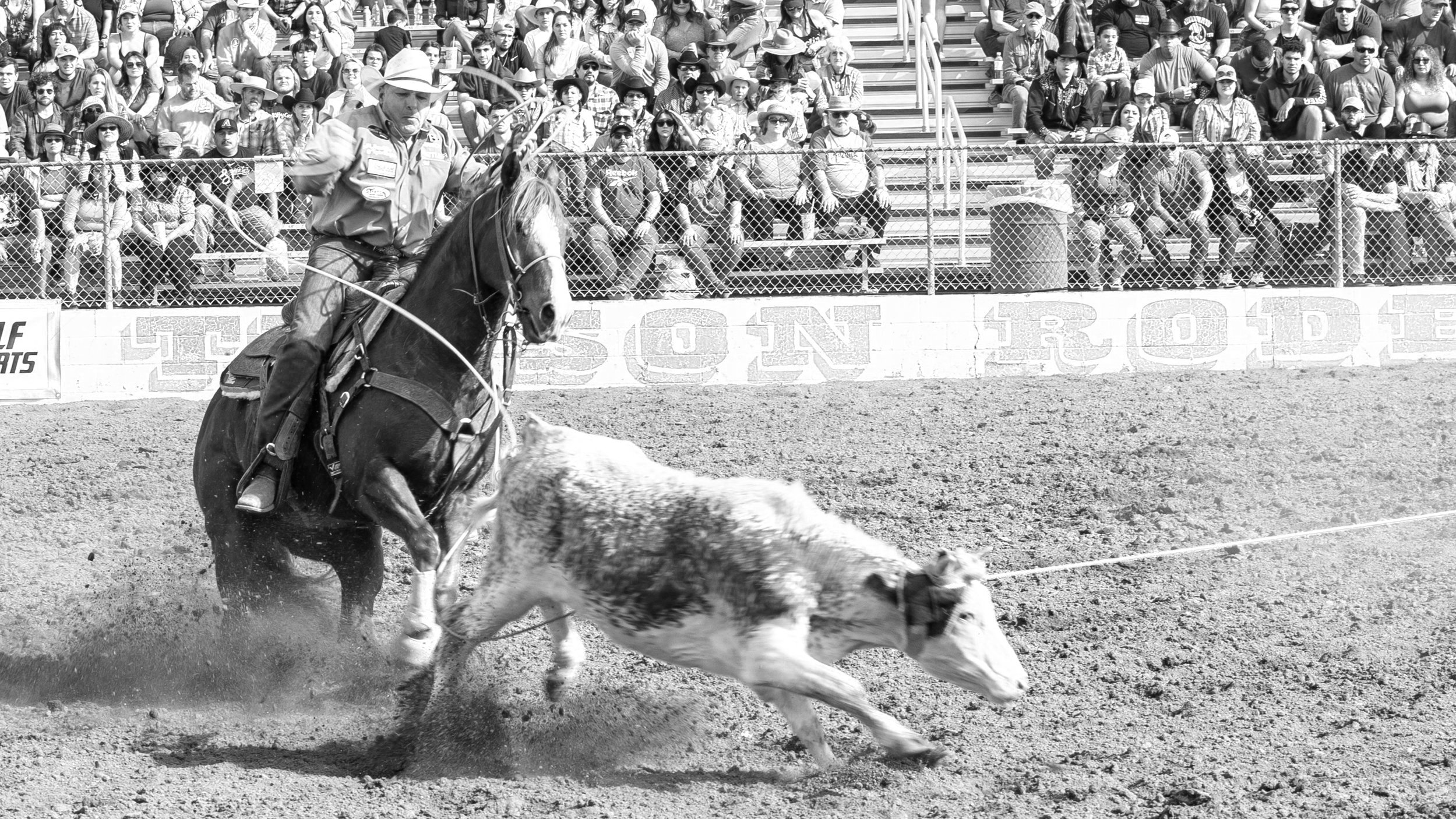
Team Roping
Date: Feb 15 - 23, 2025
Time: 2:00pm-4:30pm
Each Rodeo Day
Team roping, the only true team event in ProRodeo, requires precise timing between a header and a heeler and their horses. Originating on ranches for treating or branding large steers, this event demands hard work and practice. Team ropers start from boxes on each side of the chute, with the steer given a head start. When the steer reaches its advantage point, the barrier is released, and the header pursues, followed by the heeler. A 10-second penalty is assessed if the header breaks the barrier too soon.
The header aims to make one of three legal catches on the steer: around both horns, one horn and the head, or the neck. Any other catch results in disqualification. Once the header secures the catch, he turns the steer to expose its hind legs to the heeler, who attempts to rope both legs. A five-second penalty is given if only one leg is caught. The clock stops when there is no slack in the ropes and the horses face each other. American quarter horses are popular for this event; heading horses are taller and heavier for power, while heeling horses are quick and agile to follow the steer's movements.







